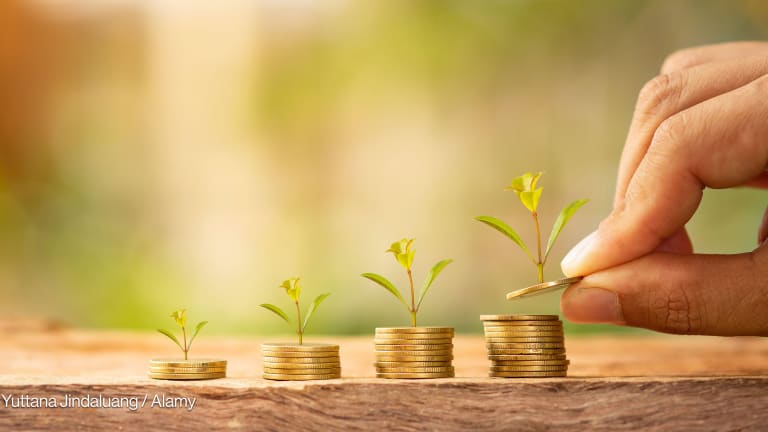
Climate change is set to cause unimaginable disruption unless immediate action is taken, and its impacts will disproportionately affect women — increasing inequality. In many low-income contexts, women’s livelihoods are more dependent on natural resources threatened by climate change as they tend to work in climate-sensitive sectors such as agriculture, forestry, and water. Women also have less access to finance, land ownership, education, and health care, which further limit their capacity to cope with and adapt to climate change.
The business case
On the other hand, women have the potential to act as agents of change for climate mitigation and adaptation. They are often leaders in developing effective coping strategies to build resilience; for instance, by adapting their farming practices. Involving women in decision-making around climate responses could therefore enhance their impact.
Evidence has also shown that investing in women can bring significant financial returns, in addition to positive developmental impact. A recent McKinsey study indicated that investing in women could add as much as $28 trillion, or 26%, to annual global GDP by 2025.
Women, however, have limited access to climate finance that could help them cope with weather-related losses, access adaptation technologies, or start green businesses, despite “women in leadership [being] more likely to pro-actively improve energy efficiency, invest in renewable energies, and measure and reduce carbon emissions,” according to the CDC Group.
The role of private capital
Despite growing investments into both climate and gender, a significant funding gap remains to achieve the climate goals set by the Paris Agreement and the Sustainable Development Goals.
It is estimated that $2.5 trillion is needed annually to achieve the SDGs by 2030, and at least $1.6 trillion annually to achieve climate targets by 2050. Public funding will not be sufficient to achieve this level of financing, so there is a need to mobilize private investment at scale.
This need is particularly acute in low-income countries, as they are the hardest hit by climate disasters due to their geographic location and reliance on climate-sensitive sectors such as agriculture and water. This has a disproportionate impact on women and other marginalized groups in these countries, who often face higher barriers to accessing and benefiting from climate finance.
Private investors are increasingly realizing the business case for investing in both climate and women. The two investment areas, however, tend to operate in silos. Combining the two can unlock huge untapped opportunities for investors that can provide healthy returns on investments, while also contributing to social and environmental impacts.
The role of development agencies
Donors and development finance institutions, or DFIs, have a crucial role to play — not only in providing public finance for gender and climate issues, but more importantly, to help catalyze private investment in these areas to bridge the funding gap. Their support should focus on:
Helping investors integrate gender and climate into the investment process.
Investors who are looking to increase investment in gender and climate should not treat these issues separately, but need to integrate them into their investment processes — from deal origination to due diligence, deal structuring, and impact measurement.
Donors can help investors incorporate gender and climate considerations into their investment processes, including by developing screening, due diligence, and impact monitoring tools with climate and gender criteria.
Establishing blended finance structures.
Many investors worry about higher risks and lower returns from green or gender investments. Donors and DFIs can help mitigate that risk by structuring blended finance vehicles that use public funds to de-risk investments and thereby catalyze private capital in these areas.
Collecting and analyzing data.
The lack of data is a major constraint for further investment in gender and climate. Donors can help both investors and investees by facilitating the collection and analysis of sex-disaggregated data. Data is needed to prove the business case to investors for investing in these areas, and to help investees develop innovative solutions to climate and gender issues.
Investors should also look more broadly at the intersectionality of climate, diversity, and justice.
—Focusing mitigation finance on sectors that can benefit women.
The majority of climate investments tend to go to mitigation activities that help reduce greenhouse gas emissions. Adding a gender lens to climate investing in renewable energy, transport, or deforestation is crucial, as better tailored solutions in these sectors can improve women’s health and livelihoods while increasing their economic empowerment by creating job opportunities.
Channelling more funding into adaptation.
Only a small proportion of global climate finance is channelled towards adaptation activities that help cope with and adapt to the impacts of climate change. This particularly affects women, who are often the ones dealing with the negative effects of climate change and play a central role in adaptation efforts.
Donors should focus on channelling more funding, both public and private, into adaptation activities that support the most vulnerable, including women.
Beyond COP 26
The gender-responsiveness of climate finance was one of the 11 public finance priorities identified under COP 26. Recent climate-related disasters have highlighted the importance of immediate action around climate finance and its intersectionality with gender, as many women smallholder farmers in LICs have been disproportionately affected. Focusing on gender has become even more important as economies are also recovering from the COVID-19 pandemic, during which women have been particularly affected.
Furthermore, climate change is also having a negative impact on other marginalized and vulnerable populations, such as Indigenous communities. Therefore, investors should also look more broadly at the intersectionality of climate, diversity, and justice. Combining these various lenses for investment have the power to unlock opportunities across all the SDGs — not only for gender equality and climate action — but also accelerate progress on goals to reach zero hunger and ensure health and well-being for all.









